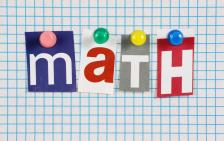How to Convert Decimals that Don’t Go On Forever Into Fractions
Learn how to convert this type of decimal into a fraction.

For example, how do you convert the decimal 0.5 into a fraction? Well, since the first digit to the right of the decimal point represents the number of tenths, we know that 0.5 is the same thing as 5 tenths, or 5 x 1/10 = 5/10 = 1/2. How about a longer decimal like 0.312? In this case, since the final digit of the decimal is in the thousandths place, 0.312 is the same thing as 312 thousandths, or 312 x 1/1000 = 312/1000. We can reduce the fraction 312/1000 by dividing the top and bottom by 8 to find that 0.312 = 39/125.
For more, see How To Convert Decimals to Fractions
Math image courtesy of Shutterstock


